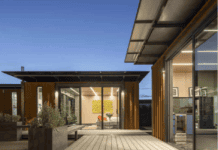After a year of some Sedona residents begging the Sedona Fire District to put plans for a proposed Chapel station on hold, SFD agreed to do just that.
On Thursday, Oct. 23, SFD announced plans to build a new station in the Chapel area would be put on hold, at least for six months, due to the national economic downturn.
For the past year, a handful of residents have attended SFD Governing Board meetings asking the board to halt plans for the station until the economy strengthens.
By Alison Ecklund
Larson Newspapers
After a year of some Sedona residents begging the Sedona Fire District to put plans for a proposed Chapel station on hold, SFD agreed to do just that.
On Thursday, Oct. 23, SFD announced plans to build a new station in the Chapel area would be put on hold, at least for six months, due to the national economic downturn.
For the past year, a handful of residents have attended SFD Governing Board meetings asking the board to halt plans for the station until the economy strengthens.
Despite threats of a recall, the board responded in June and July that it would continue with plans for the Chapel station because of the need for quicker response times in that area — between Station No. 4 in Uptown and Station No. 3 in the Village of Oak Creek.
“We really need one, but things have happened in the economy on a national level that no one could predict,” SFD Business Manager Karen Daines said. “We have to play the cards we dealt.”
SFD’s cards show it hasn’t been putting money away in a “rainy day” fund, she said; the only money put aside was $2 million to build the Chapel station.
According to Daines, SFD now has two choices. It can take that $2 million and use it to continue to operate in the potential upcoming deficits without raising taxes, or it can use the $2 million toward a new Chapel station.
Since the Chapel station will cost more than $2 million, SFD would be required to finance the rest, taking on more debt, which would require the district to make cuts to make ends meet, Daines said.
“It’s scary for us to take on additional debt when we’re really trying not to cut services,” she said.
SFD decided to put the brakes on the Chapel station and keep the $2 million as a cushion.
“We will use part of that $2 million to get through the down economy,” she said.
Daines will present the board a draft policy on retaining funds so it’ll have a “rainy day” fund for the future.
“This will be a lesson to the organization to do long-term savings that will be a little more fiscally conservative in the future than we have been in the past,” she said.
The Chapel station, which SFD has spent hundreds of dollars on in the design phase, is about 70 percent designed and SFD will continue to get bid speculations, so when the time comes, the plans will be ready.
“We know we’re going to build the Chapel station, it’s just a matter of when,” Daines said.
Since there is still a definite need for a station in that area, SFD will evaluate a potential short-term solution, according to Assistant Chief Terry Keller.
According to Daines, the hold on the Chapel station is just one fiscal change in the district.
“We’re getting rid of all the ‘nice to haves’ and keeping the ‘have to haves,’” Daines said, “and we can do that because of the $2 million.”
On Oct. 24, Board Chairwoman Caryn Maxwell announced the district put on hold the remodelling of Station No. 4 and building a new regional dispatch center.
Outside travel for conferences and non-mandatory training have been suspended, Maxwell said, and overnight stays are eliminated when possible.
The district is also deferring the purchase of some new vehicles, although the board approved to purchase a new Ford Expedition for the fire chief for $33,923.75.
The 4×4 will replace a 1997 Chevy Tahoe with 174,450 miles.
SFD may look at an administrative hiring freeze, Daines said, but will continue to fill firefighter positions.
“It would cost us more to pay people overtime to fill in than it would to hire a new employee,” she said.
SFD plans to look at the Chapel station again in six months.
“If we think things are turning around, maybe we could look at some longer-term financing strategies,” Daines said. “It’s not a permanent delay.”


















